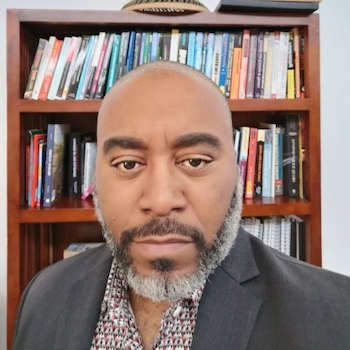
Development’s Tug of War
Development, although taught in the academy, is most often practiced outside of it. There is a very real tension between theory and practice although each relies on the other for survival.
As an undergraduate, I vaguely remember someone from a student activist group preaching about the need to take the skills learned in the classroom “to the masses.” I may have been that student. I can’t recall. It seems so long ago. Working for a labor service organization within a National Labor Center, my colleagues and I tend to avoid referring to what we do as a “business.” At times I’m unsure what to call it. The deadlines, question & answer sessions with donors, board meetings, activity report forms, debriefs, strategic planning activities, and semi-annual, and end-of-year reports seem more “business” than a “calling” or a “mission.” Although the latter is easier to process, what we do is indeed a business. Academicians have no issue accepting the duality of development, although most are only engaged in one aspect. Anna Dickson states, “Development is both a concept and an activity.”
For anyone formally trained in the academy but practicing outside of it, there is often a struggle between what is learned and how best to apply it in the field. What has been taught and learned inside and outside of the classroom must be navigated in order to fully address both the theory and business of development. I agree that “theory guides and structures the focus of observation of ‘reality.” But Dickson’s statement refers to it as a concept. Does this word choice indicate a distancing from the academy—a place where theory lives or dies depending on who is asked? Perhaps the elitism that flows so easily across the screen in the Chronicle of Higher Education blogs has created an embrace of the negative in some ways similar to the way some ethnic minorities might “reclaim” a racial epithet. The spin takes the power away from the word. It is transformed. The above works if in fact, one believes that distance from the academy is a negative and that theory ranks “higher” than concept in importance within the development field.
Dismantling the Dickson statement one would first need to approach the term concept within development. The Sumner and Tribe article references Martinussen who addresses the difference between development theory, development concept, and development strategy. Further processing Martinussen, it is stated that a “development concept is a development objective.” Development is a goal to be obtained. The question is how to go about it? The concept of development is attached to theory yet is practicable. In a perfect world it would move outside of the classroom without difficulty.
Important questions were raised in the aftermath of World War Two. How would Europe be rebuilt? How would colonies held by decimated European nations gain their independence? What worldview or theory would guide all of this? Was there to be one concept, theory, or strategy that could be applied to all situations? Could development be measured the same way irrespective of culture, history, and religion? Would the market or the state decide best practices in pursuit of development? The surface, the paper from which the development map or concept was written was theory. Once the development map was created the one in possession of it became actively involved in the activity or business of development. Being that development studies is acknowledged to be multidisciplinary it was possible to consider a number of approaches when conducting activities but likely to be guided by a dominant theory. But in order to gain access to the resources necessary to fuel the activity, the practitioner had to be able to communicate to different audiences.
Until recently, I rarely thought about the language that I had been required to learn in order to work in the field. One has to be able to maneuver, to navigate, and to position one’s self on the map. Engaging in the activity of development meant speaking, not necessarily understanding, but speaking the language. Andrea Cornwell states, “Policies depend on a measure of ambiguity to secure the endorsement of diverse potential actors and audiences. Buzzwords aid this process, by providing concepts that can float free of concrete referents, to be filled with meanings by their users.”
So how are good governance, partnership, civil society, rule of law, and capacity-building defined? Do they have the same meaning regardless of the speaker? Is there truly a North-South dialogue that has forced these words to evolve over time? Or are they merely empty codes, meaningless words spoken or written in order for the practitioner to be given the opportunity to engage in the activity of development? Were these words consciously created to be vague enough to spark interest in the largest possible audience? Although the language of development is vague or perhaps to be more positive, inclusive, there still remains a conflict between the scholars and the practitioners. This is a struggle between those who create and reflect on theory and those who apply it in the field. Sometimes the practitioner is even lumped in with the “policymakers.” Many have argued that much of the development field is driven by what can be funded rather than what is truly needed.
John Harriss implies a war between the academy and those outside of it when he writes of a need “for a critical engagement on the part of development scholars with development policy-making rather than placing development studies at the service of the fads, such as ‘social capital’ and ‘participation’ of the policy-makers.” Here Harriss is claiming that the entire playing field should be controlled by the scholars. That they alone, through intense exploration of theory know what is best for those whose lives, institutions, and communities must be developed. His statement raises the question of the role the “developed” play in “elevating” those who aspire to gain membership to their exclusive club—the developed world.
Organized labor, of which I am a part, hides some of the territorial disputes that seem to play out between the academy and the practitioners in the development field. Labor hides the war between theory and practice perhaps better than others in the field, but the push and pull to determine who knows best for those who must be “developed” is just as strong. Human resource departments, business schools, and the ever-dwindling labor studies faculty in the U.S. rarely mingle with organized labor. And organized labor, with a few notable exceptions, seldom makes any real effort to extend a hand to the academy.
The above illustrates not only the existence of but the conflict between concept and activity or theory and practice within development. That this issue seems to be known by both scholar and practitioner is positive in that such awareness could possibly result in a better working relationship. Or maybe not, as both compete for a shrinking pool of funds. What is at times left out of the debate is the community being studied, partnered with, and supposedly developed. The tension between what is theoretically sound and what can be practically applied, often with limited available resources, is very real.
Both the concept and the activity of development are influenced by funding and can be manipulated by the “hot” new trends emerging within the academy and the NGO community. I’d like to believe that human-needs centered development informs progressive practice with its inclusion of participation and empowerment as necessary ingredients. But then I’m reminded that “participation” itself is a “fad.” But maybe the concept and activity of development should not be comfortably linked. Perhaps it is best that theory be challenged by practice and vice versa. They can’t exist without the other, but the home they share need not always be a comfortable space.

